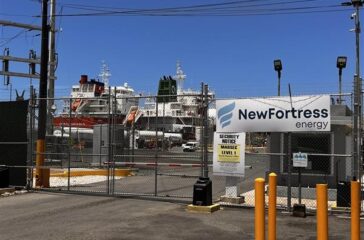Puerto Rico’s natural gas buildout may harm those it claims to help
By Shannon Kelleher
Since 1999, Lissie Aviles, a Catholic nun, has lived in a convent in Cataño, Puerto Rico, a tiny town that borders the Bay of San Juan. The area is home to the world’s largest rum distillery, a Bacardi factory dubbed the “Cathedral of Rum.” Just across the bay, millions of tourists – many from the US mainland – flock to visit Old San Juan’s beaches and historical sites each year.
Cataño is known both as the smallest municipality on the island and as “the town that refused to die,” after it succeeded in fending off an early twentieth-century effort to merge the city with the inland community of Bayamón. The challenges for Cataño residents have persisted — after Hurricane Maria devastated the island in 2017, about 60% of Cataño residents were left homeless. Today, about 46% of the population lives below the poverty line in a US territory lacking full political representation and weighed down by a long legacy of colonization.
Aviles spends much of her time training faith educators in nearby parishes. But in recent years, her work has taken on an additional focus – defending local residents against harmful impacts tied to the island’s intensifying focus on expanding access to liquified natural gas (LNG).
The federal government has earmarked billions of dollars to help stabilize the island’s hurricane-rattled power system, including funding temporary generators powered by natural gas. Additionally, the US Army Corps of Engineers (USACE) has approved a project to dredge the San Juan Bay beginning in January, allowing the nearby LNG terminal to receive ships carrying six times more LNG than current tankers. And one particularly contentious project is expanding with a new LNG pipeline.
While natural gas is considered the cleanest of fossil fuels because it produces less carbon dioxide than oil or coal, climate scientists say rising use of natural gas is emerging as one of the greatest contributors to human-caused climate change.
Though the stated aim of the LNG buildout is to ensure adequate resources to power the island, LNG imports are bringing methane leaks and diesel exhaust generated by the ships and trucks that transport the fuel, and posing risks associated with potentially explosive infrastructure, say Aviles and other critics. These dangers add to the cumulative risks of existing fossil fuel pipelines, tankers, and other infrastructure that already coexist uneasily with nearby neighborhoods. As they work to heal the wounds wrought by the 2017 hurricane and by Hurricane Fiona in 2022, many Catano residents fear the unintended consequences of an LNG boom.
 EWG
EWG